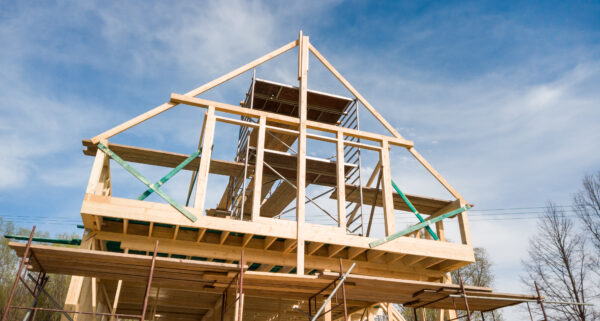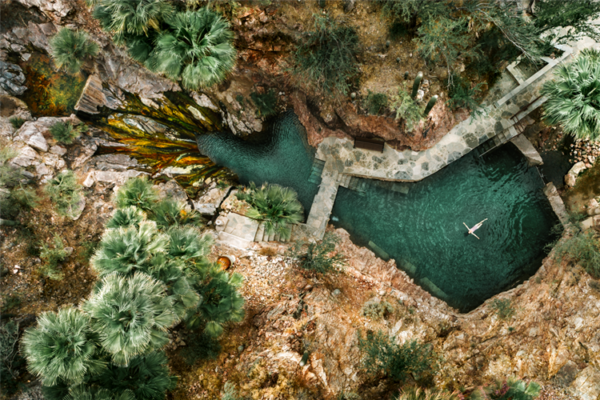By David Weigel | The Washington Post
In this edition: The political geography of Arizona, the stakes and politics of the Supreme Court fight, and polls that give some clues to an unprecedented election event.
If you’re a Democratic candidate with an ActBlue account, can I borrow five bucks? This is The Trailer.
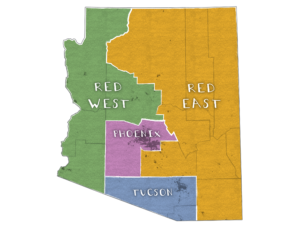
How did the home of Barry Goldwater become a swing state? If it flips from red to blue this year, the question — not hard to answer — might be why it didn’t flip sooner. One in 4 voters are non-White, an electorate that’s heavily Democratic here, and a slim majority of voters were college graduates, according to the 2016 exit polls.
Every other state with that profile, every other state with rapid urban growth, has been moving briskly toward Democrats since 2016. By nominating Arizona’s senior senator for president in 2008, and by picking the first-ever Mormon nominee in 2012, Republicans ran stronger here in other states with similar Latino populations and similar urban-rural splits.
“The Arizona electorate is primed for the Democratic Party,” said Rep. Ruben Gallego, who has represented downtown Phoenix in Congress since 2015. “If the Democratic Party is doing well in highly educated, urbanized, suburbanized areas, we’re doing well in Arizona — it’s 80 percent urban and suburban. And the same time we a rising young Latino community that is only voting Democratic. Just one of those would make the state competitive, but you add them together and we’re seeing a surge.”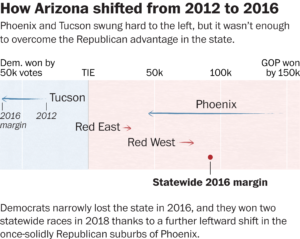
On paper, Republicans can win the presidency without Arizona, but they neverhave before. The advent of air conditioning transformed Arizona from a largely empty desert state with sprawling Native American reservations to a beacon for people — often retirees — fleeing the Midwest. One in 11 Arizonans are military veterans, and for a long time, the suburbs blossoming across Maricopa County gave the GOP an unbeatable advantage in presidential elections.
Always conservative, Arizona’s Republicans moved further to the right since 2008 — and it has cost them. The 2010 passage of S.B. 1070, one of the country’s strictest anti-immigration laws, won votes at first but galvanized the left and the Latino vote. The late senator John McCain faced conservative challengers in his final two campaigns; former senator Jeff Flake retired rather than face likely defeat over his criticism of President Trump.
But the conservatives were losing, too, with Maricopa County Sheriff Joe Arpaio ousted by voters in 2016 and Republicans ceding a Senate seat and the secretary of state’s office in 2018. The state’s GOP chair, Kelli Ward, made her name as a fringe Senate candidate (“Chemtrail Kelli”). And the state’s Republican legislative majority is seen as vulnerable, both because of the parties’ shifts and because of voter unhappiness with how Gov. Doug Ducey (R) responded to the coronavirus.
The president has a devoted base in Arizona and made one of his very first campaign stops here, alongside Arpaio, when some media outlets did not take him seriously. Immigration, which has often reshaped politics in the state, has been subsumed by other issues this year, and one Democratic bet is that Trump, who pardoned Arpaio in 2017, has taken the wrong side of the state’s culture wars.
Democrats also look fondly at Arizona for a very 2020 reason: Like Florida, it has a robust early-voting tradition and allows votes to be counted before Election Day. The results here could preview the rest of Election Day, in parts of the country that won’t be tallying votes so quickly.
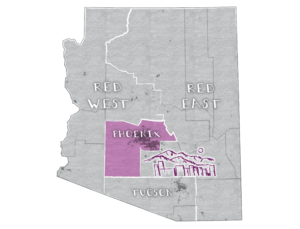
Phoenix
The modern Republican Party’s strength in Arizona came from Maricopa County. In the past 25 years, its population doubled, and from the start of the century until 2016, no Republican nominee for president won it by fewer than 10 points. In 1948, the last time a Democratic nominee carried the county, the city of Scottsdale didn’t even exist. But even then, Maricopa dominated state politics. It cast 45 percent of Arizona’s votes in 1948; by 2016, it was casting 53 percent.
Nine of Arizona’s biggest cities are here, from deep blue Phoenix and Tempe to deep red Peoria and Surprise. Demographics explain much of the political difference, with White voters making up about three-quarters of the electorate in the reddest cities and less than half of it in Phoenix. By advancing in these suburbs, Democrats have put the whole state in play; in 2018, Sen. Kyrsten Sinema won practically everything here inside the 101 and 202 highway loops. Even Mesa, founded by Mormons and still shaped by their politics, swung to the left.
The result, in 2016, was a collapse in the Republican margin. Mitt Romney came out of Maricopa with a 146,597-vote lead, while Trump won it by 45,467. Polling has found Trump trailing Joe Biden in the county, and losing it by any margin would make it hard for the ticket to win statewide.
Compared with the state overall, the voting population here …
Has a higher share of people living in cities than average.
Has an average share of non-White residents.
Has more college-educated residents than average.
2016 vote totals
Donald Trump: 747,857
Hillary Clinton: 702,390
Counties included: Maricopa
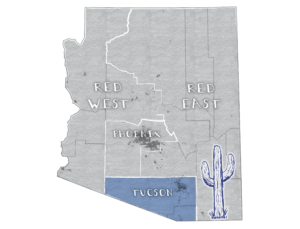
Tucson
Democrats dominate southeastern Arizona, and in 2016, they carried all but three precincts along the U.S.-Mexico border. Their strength here comes from three blue centers: the cities of Tucson and Nogales, and the Tohono O’odham Nation, 4,500 square miles in the middle of Pima County. In 2020, growth and Democratic turnout in Tucson was enough to flip the 2nd Congressional District, which Sen. Martha McSally (R) won twice as a member of Congress — and which former congresswoman Gabrielle Giffords, the wife of this year’s Democratic Senate nominee, won before her.
Tucson, where the University of Arizona has helped grow a year-round liberal political culture, has given Democrats bigger margins every four years. That’s given the party more of a cushion as it competes in the rest of the state. In 2016, Donald Trump got 555 fewer votes in the region than George W. Bush did in his reelection campaign; Hillary Clinton ran 36,314 votes ahead of John F. Kerry.
Compared with the state overall, the voting population here …
Has an average share of people living in cities.
Has more non-White residents than average.
Has more college-educated residents than average.
2016 vote totals
Donald Trump: 171,286
Hillary Clinton: 236,418
Counties included: Pima, Santa Cruz

Red East
Before Tucson and Phoenix became party strongholds, Democrats’ strongest vote in Arizona came in the Native American reservations here. The Apache and Navajo nations cover nearly half of the region and contain more than 200,000 Arizonans. Democrats have also added votes in the city of Flagstaff, the biggest population center that isn’t an exurb of Phoenix, where Mormon voters have struggled with aspects of Trump’s personality and presidency.
Still, those exurbs give the region a red hue — Pinal County, which contains those conservative towns down Interstate 10, is the most populous part of Arizona that actually moved toward Trump in 2016. He won more votes there than Democrats won in Flagstaff, growing the
GOP margin in eastern Arizona from 25,236 votes in 2012 to 32,251 votes in 2016. For every vote Trump picked up here, Democrats picked up seven in Maricopa, and further movement in that direction would let Trump win most of the region while clearly losing the state.
Compared with the state overall, the voting population here …
Has a lower share of people living in cities than average.
Has more non-White residents than average.
Has fewer college-educated residents than average.
2016 vote totals
Donald Trump: 174,944
Hillary Clinton: 142,722
Counties included: Apache, Cochise, Coconino, Gila, Graham, Greenlee, Navajo, Pinal
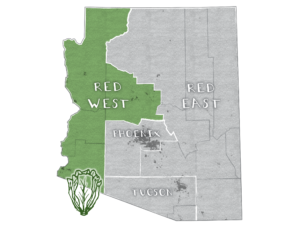
Red West
Arizona’s “west coast” is now the most strongly Republican part of the state, with a few small White-majority cities that have exploded in population. Outside the southwestern corner of the state, where the city of Yuma and border town of Somerton represent a sizable, majority-Latino Democratic vote, Republicans carried all but three precincts here in 2016, and the retirees from more liberal states who’ve moved here over the past few decades are just as solid for him today
The president makes an ideal cultural fit for the region, just as he is in northeastern Pennsylvania or central Wisconsin — pro-gun rights, antiabortion and anti-immigration. The question is how many more votes there are to win. Trump improved on Romney by nearly 20,000 votes here, but Clinton ran 6,000 votes ahead of Barack Obama, running so strong around Yuma that she nearly flipped the county.
Compared with the state overall, the voting population here …
Has a lower share of people living in cities than average.
Has fewer non-White residents than average.
Has fewer college-educated residents than average.
2016 vote totals
Donald Trump: 158,765
Hillary Clinton: 79,196
Counties included: La Paz, Mohave, Yavapai, Yuma


